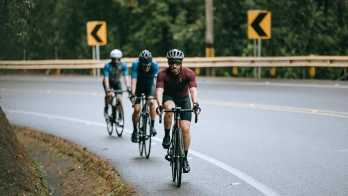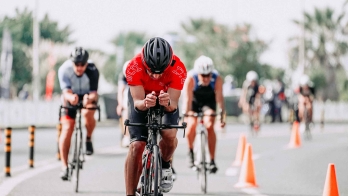How to lose weight without killing your cycling performance
Balancing cycling performance and weight loss can be tricky. Sure, being lighter can be helpful for hill climbs, but not if it comes at the expense of muscle mass. Here are 7 science-backed strategies for losing weight without losing muscle (and killing your cycling performance).

Contents
Eat more complex carbs Prioritize protein Make strength training part of your routine Prioritize pre-exercise and recovery nutrition. Save significant weight loss for the off-season. Take a slow, steady, and sustainable approach. Experiment with time-restricted feeding over traditional dieting. Summary Key takeawaysYou don’t have to ride fast to be a cyclist, but if you’re carrying around a little extra weight, slimming down could just make you faster. It’s simple physics, really. The more you weigh, the more energy it takes to move you along. The less you weigh, the less energy it takes.
That’s where things get, well, complicated. In order to perform at your highest level, you’ve got to be both strong and a healthy weight. Sure, you sacrifice a little speed carrying around a few extra pounds, but slimming down too much or too quickly can also hurt your performance.
So how do you lose weight without losing muscle and backtracking on the bike? Here are seven science-backed strategies to help you lose weight without killing your performance.
Eat more complex carbs
Low-carbohydrate diets can be incredibly effective for weight loss, but extreme carbohydrate restriction can crush performance [1]
If you’re entertaining the popular “train-low, compete-high” hack to cut back on carbs, you may want to reconsider. While this type of diet can enhance the body’s ability to oxidize fat and spare muscle glycogen, restricting carbs during training may hamper your performance, reduce gains, and cause you to dip into muscle for energy [2].

While going low-carb is deleterious, a modest reduction in carbohydrate (40-45% of daily calories) may help you lose weight and won’t leave you running on fumes during workouts.
If you’re scaling back on carbs, cut out refined grains and added sugars first, and incorporate plenty of fiber-rich, complex carbohydrates like fruits, vegetables, and whole grains into your daily diet [2]. These foods provide adequate energy for training and performance and they also offer health and weight management benefits like satiety and stabilization of blood sugar after a meal [3]
And don’t skimp on the carbs before, during, and after a ride. This is when your body needs them the most, and cutting carbs around training can leave you feeling crappy on the bike and delay recovery. (Read more about this below).
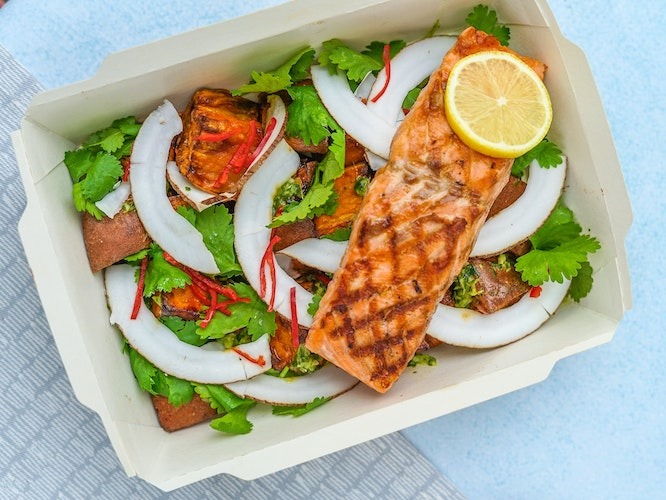
Prioritize protein
One of the biggest downsides to dropping pounds is the loss of metabolically active lean body mass in addition to body fat. This loss of lean body mass can have several negative implications for athletes including reduced metabolic rate and aerobic capacity [ 5 6
The good news is upping your protein intake may help prevent muscle loss as you shed fat. Research shows a high protein diet can help reduce body weight, fat mass, waist circumference, and preserve lean mass when you’re trying to lose weight [1] [5] 5
In addition to eating more quality protein, you should space your intake throughout the day. Research shows “protein pacing”, dividing dietary protein into 4-6 meals or snacks throughout the day with no more than 30-40g of protein per meal/snack, stimulates more muscle protein synthesis and reduces muscle loss with weight loss [ 7 8
Aim to get 1.8-2.7 g/kg of protein/day divided into 4-6 meals or snacks if you’re a cyclist trying to lose weight.
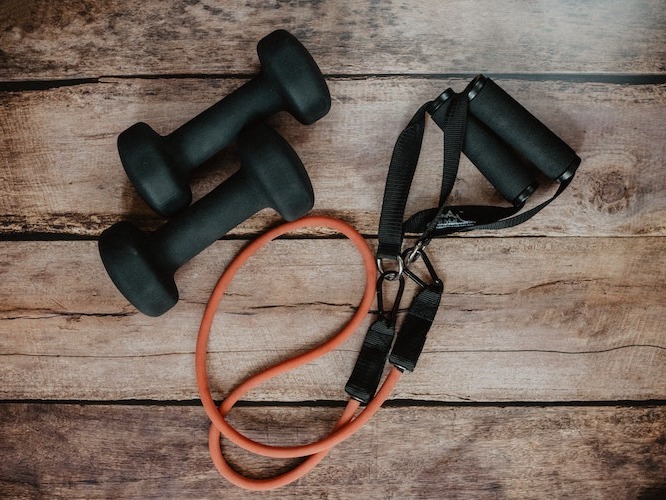
Make strength training part of your routine
Lifting weights won’t torch as many calories as a long ride, but strength training is more effective for building muscle than cardio, which can also minimize lean body mass loss and reductions in metabolic rate.
Evidence shows that strength training, when paired with adequate protein intake, can preserve lean body mass even during energy restriction [5]
Make sure to incorporate at least 1-2 strength training sessions into your training regimen to build strength, reduce your risk of injury, and maintain lean body mass [9]
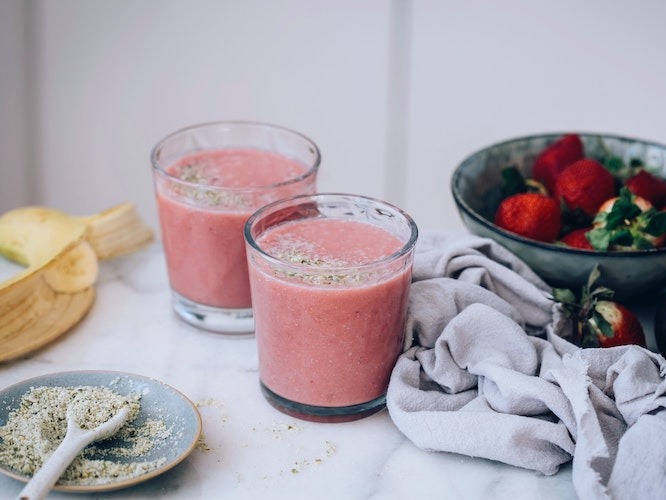
Prioritize pre-exercise and recovery nutrition.
Timing and composition of meals are especially important for optimizing performance, training adaptations, and preventing overtraining syndrome when you’re trying to shed pounds [3]
Specifically, before and after a ride is not the right time to skimp on fuel. Starting your ride with an empty fuel tank can completely ruin your training session.
Here are some tips for timing meals and snacks for maximum output on the bike and rapid recovery afterward [3]
Have a meal 4-6 hours before a tough workout to top off your glycogen stores.
Consider having a light snack with both carbs and protein 30-60 minutes prior to longer, or more intense workouts to increase energy and protein availability.
Have a snack or small meal consisting of 1g/kg of carbohydrate and 0.5 g/kg of protein within 30 minutes of finishing a workout to promote muscle synthesis and minimize muscle breakdown.
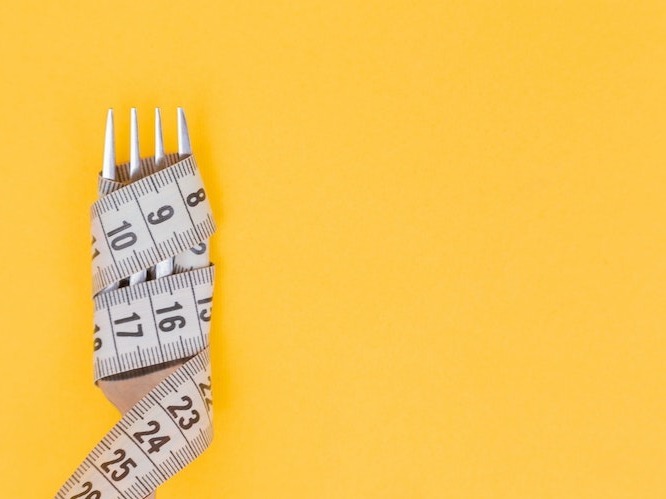
Save significant weight loss for the off-season.
Losing weight can make training feel more difficult and sometimes hinder cycling performance, especially if it involves loss of lean mass.
For the casual cyclist looking to lose a few pounds, you may slim down just by getting on the bike a bit more often or training for an upcoming race. Modest weight loss achieved through exercise most likely won’t affect overall performance, providing that you’re consuming enough and prioritizing pre- and post-ride nutrition.
For the more competitive cyclist, dieting during peak training season can have some serious consequences. Research shows calorie restriction during training can not only impede performance but lead to significant losses of lean muscle mass, physical and psychological symptoms of overtraining, and illness [3]
For this reason, serious cyclists should consume adequate energy during peak training periods to maintain body weight and health, and maximize training effects, and save serious weight loss for the off-season, when energy and performance demands are lower [2].

Take a slow, steady, and sustainable approach.
Weight loss can have several negative effects on hormones, metabolism, and body composition. While you may hit your weight loss goals faster, large caloric deficits come at a cost, including greater losses of lean body mass and compromised athletic performance and recovery [4]
When you are ready to lose weight, it’s best to approach weight loss as you would your first century ride — slow and steady(ish).
As you get leaner, slower rates of weight loss can better preserve lean body mass, which we know is crucial to cycling performance [1]
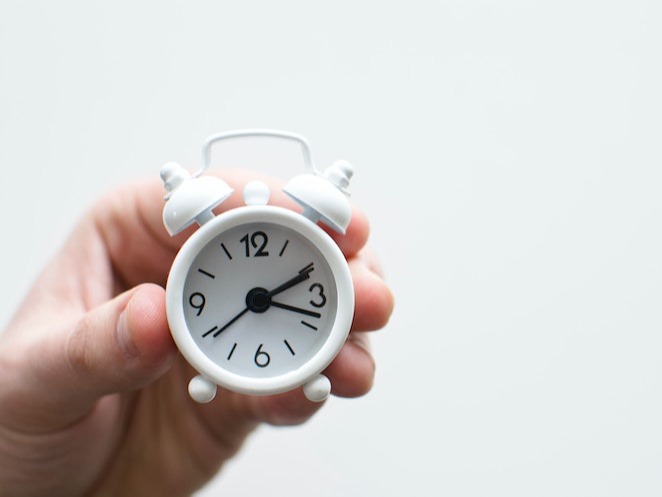
Experiment with time-restricted feeding over traditional dieting.
We all know crash diets are a recipe for disaster (especially for athletes), but evidence suggests time-restricted feeding (TRF), a form of intermittent fasting, maybe better for weight loss than daily calorie restriction.
If you’re not familiar, TRF typically involves a fasting period of 16-20 hours followed by a 4-8 hour eating window. Unlike other types of intermittent fasting that involve calorie restriction, time-restricted feeding allows you to eat as much as you want during that 4-8 hour window.
Studies show intermittent fasting diets, particularly time-restricted feeding, perform equally to or better than daily calorie restriction for improving body composition [1] [1]
As far as diets go, many find time-restricted feeding less restrictive and easier to stick with since all foods are fair game and a significant portion of the fasting window happens while you sleep.
If you’re interested in experimenting with time-restricted feeding to lose weight, give your body time to adjust. Start with a 10-hour overnight fast and increase as tolerated to 12-16 hours. If you have diabetes or low blood sugar, chat with your doctor or dietitian about how to safely try TRF.
Summary
It is possible to lose weight without sacrificing cycling performance. Eating more complex carbs and protein while prioritizing strength training and sports nutrition, will help minimize decrements in cycling performance associated with weight loss. Just remember to save serious weight loss for the off-season, and take a slow, sustainable approach for the best results.
Disclaimer: The text, images, videos, and other media on this page are provided for informational purposes only and are not intended to treat, diagnose or replace personalized medical care.
Key takeaways
Low-carbohydrate diets can be incredibly effective for weight loss, but extreme carbohydrate restriction can crush performance
[1]
.Aim to get 1.8-2.7 g/kg of protein/day divided into 4-6 meals or snacks if you’re a cyclist trying to lose weight.
30 minutes after a workout, have a snack or small meal consisting of 1g/kg of carbohydrate and 0.5 g/kg of protein to promote muscle synthesis and minimize muscle breakdown.
When combined with training, time-restricted feeding can be beneficial for fat loss while maintaining strength
[1]
.Approach weight loss as you would your first century ride — slow and steady(ish).
References
International society of sports nutrition position stand: diets and body composition.
https://jissn.biomedcentral.com/articles/10.1186/s12970-017-0174-y
(2017)Sport nutrition: A review of the latest guidelines for exercise and sport nutrition from the American College of Sport Nutrition, the International Olympic Committee and the International Society for Sports Nutrition (2013)
Kreider RB, Wilborn Cd, Taylor L, et al. ISSN exercise and sport nutrition review: research and recommendations. Int J Soc Sports Nutr. 2010;7:7 [homepage on the Internet]. c2012. Available from:
http://www.biomedcentral.com/content/pdf/1550-2783-7-7.pdf
Murphy, C. H., Hector, A. J., & Phillips, S. M. (2015). Considerations for protein intake in managing weight loss in athletes. European journal of sport science, 15(1), 21–28.
https://doi.org/10.1080/17461391.2014.936325
Trexler, E. T., Smith-Ryan, A. E., & Norton, L. E. (2014). Metabolic adaptation to weight loss: implications for the athlete. Journal of the International Society of Sports Nutrition, 11(1), 7.
https://doi.org/10.1186/1550-2783-11-7
Weiss, E. P., Jordan, R. C., Frese, E. M., Albert, S. G., & Villareal, D. T. (2017). Effects of Weight Loss on Lean Mass, Strength, Bone, and Aerobic Capacity. Medicine and science in sports and exercise, 49(1), 206–217.
https://doi.org/10.1249/MSS.0000000000001074
Moore, D. R., Areta, J., Coffey, V. G., Stellingwerff, T., Phillips, S. M., Burke, L. M., Cléroux, M., Godin, J. P., & Hawley, J. A. (2012). Daytime pattern of post-exercise protein intake affects whole-body protein turnover in resistance-trained males. Nutrition & metabolism, 9(1), 91.
https://doi.org/10.1186/1743-7075-9-91
Iwao, S., Mori, K., & Sato, Y. (1996). Effects of meal frequency on body composition during weight control in boxers. Scandinavian journal of medicine & science in sports, 6(5), 265–272.
https://doi.org/10.1111/j.1600-0838.1996.tb00469.x
Fleck, S. J., & Falkel, J. E. (1986). Value of resistance training for the reduction of sports injuries. Sports medicine (Auckland, N.Z.), 3(1), 61–68.
https://doi.org/10.2165/00007256-198603010-00006


